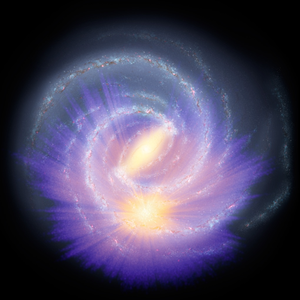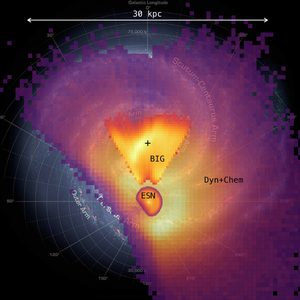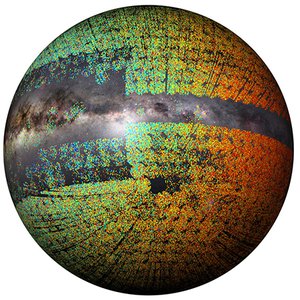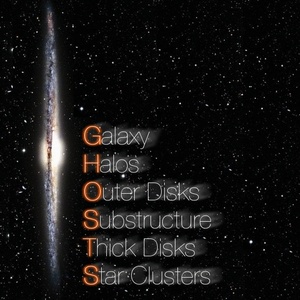Observations and Surveys
Our group has particular strength in the area of large spectroscopic surveys of Milky Way stars, being the lead institute of the RAVE survey, and being involved in the Gaia-ESO, SEGUE, APOGEE, and SDSS-V surveys. We combine these datasets with astero-seismology measurements from the CoRoT, Kepler, and K2 satellite missions, to derive more accurate stellar ages and distances. Combining spectroscopic and photometric measurements with the superb Gaia mission parallaxes, allows us to derive the most accurate distances and extinction values to hundreds of million stars of stars with our StarHorse code. We have expertise in astrometric searches for nearby stellar and sub-stellar objects. We are using the Hubble Space Telescope to understand the ages and chemical abundances of resolved stellar populations in nearby galaxies in the Local Volume.
StarHorse

We developed the Bayesian software code StarHorse that combines Gaia parallaxes with photometry and spectroscopy to derive stellar parameters, distances, and extinctions for hundreds of million stars. StarHorse provides a powerful value-added dataset for mapping the three-dimensional structure of our Galaxy, demonstrated through distance- and extinction-corrected colour-magnitude diagrams, extinction maps as a function of distance, and extensive stellar density maps. In particular, it provided one of the first clear manifestations of the Galactic bar in the stellar density distributions based on Gaia data (see figure).
4MIDABLE-LR

4MIDABLE-LR will provide the largest spectroscopic follow-up of Gaia (adding key information to the Gaia RVS) and thereby allow us to view the Milky Way as a whole stellar system by providing a detailed 3D chrono-chemokinematical map of the Milky Way stellar disk and bar-bulge. With this 4MOST survey we aim to study kinematic and chemical substructures in the Milky Way disk and bulge region with samples of unprecedented size out to larger distances and greater precision than conceivable with Gaia alone or any other ongoing or planned survey. We aim for spectra for at least 9.0 million stars, with high enough S/N ratio to also extract chemical information for at least half of the sample.
RAVE

The RAdial Velocity Experiment (RAVE ) has used the 6dF spectrograph on the 1.2-m UK Schmidt Telescope to collect 574,630 spectra of 483,330 stars. These spectra are used to measure the radial (line-of-sight) velocity of the stars, as well as stellar parameters and elemental abundances. RAVE has been used to understand the thin and thick disk kinematics and abundance patterns, to make mass estimates of the Milky Way, find anomalous stars in the Solar Neighbourhood arriving from the Milky Way centre, and to discover the Aquarius stream, the nearest stream of stars originating from a tidally disrupted dwarf galaxy. RAVE was furthermore key in investigating wobbling and breathing modes in the Milky Way kinematics.
GHOSTS

The Galaxy Halos, Outer disks, Substructure, Thick disks and Star clusters (GHOSTS) is a survey of resolved stellar populations in the outskirts of nearby spirals using the Hubble Space Telescope, the largest of its kind to date. The survey comprises 18 disk galaxies with distances from 3 to 17 Mpc and rotation velocities of 80-250 km/s. The color-luminosity diagrams of the stars allow us to make estimates of the ages and chemical enrichment of the stars around these galaxies. These faint stars can be traced to very large distances from the galaxies, allowing us to measure the shape and structure of the stellar halos around the host galaxies, thought to be the remains of tidally disrupted dwarf galaxies. GHOSTS has further been used to show that the age distribution of stars across disk breaks is constant with a picture of strong radial migration of stars, to show that disk heating takes place rapidly, and that gas warps on the outskirts of galaxies only contain young stars, no old stars, ruling out torques as the main driver of warp formation in these galaxies.